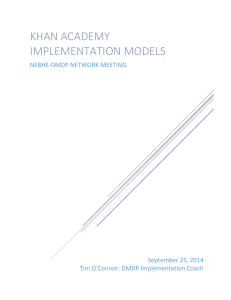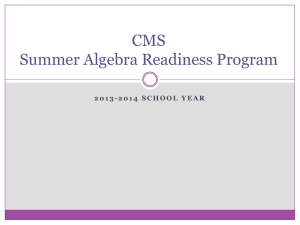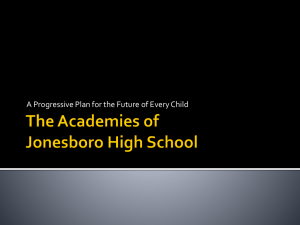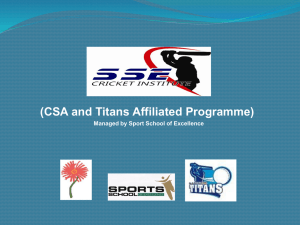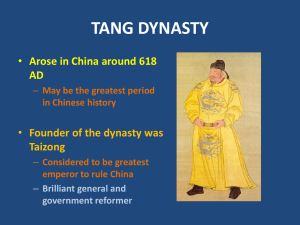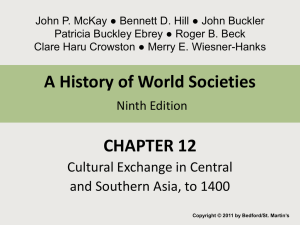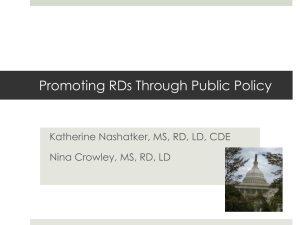Implementation Models
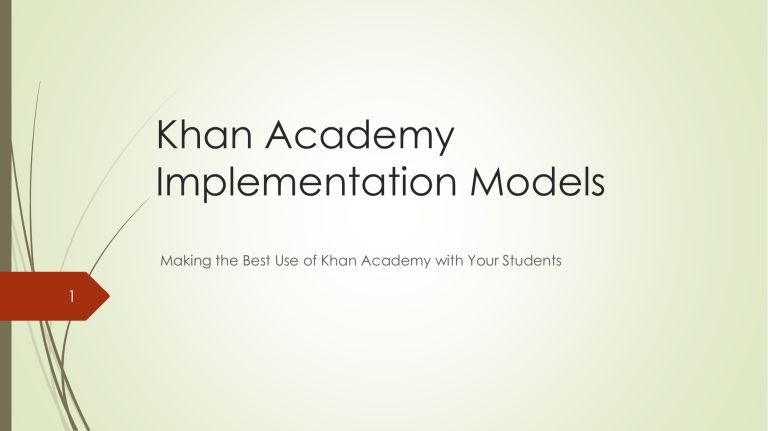
1
Khan Academy
Implementation Models
Making the Best Use of Khan Academy with Your Students
2
Implement for Student Needs
Consider your students’ needs
Self-study resource
Accuplacer or classroom supplementation
Tool for supported study
Student self-pacing or extra support
Looping back to fill knowledge gaps or moving ahead
Boot Camp programs
Targeted Playlists
Meet full semester course objectives
Developmental math and technical training courses
Blended Learning
Missions
3
Choosing an Implementation Model
Choose a model based on your intended outcomes
What are you trying to assess?
How are you planning to assess?
Which implementation model works best in light of your instructional choices and your students’ needs?
4
What Are You Trying to Assess?
Diagnostic Gaps
Targeted Intervention
Diagnosis of Learning Challenges
Real-time student progress data – collaboration, competition, Energy Points, inspiration
Course Objectives
Missions or customized curriculum mapping
Content Mastery
Mastery Challenges
5
Assessment Possibilities
Pre/Post Accuplacer Scores
Pencil and paper homework, quizzes and tests
Weekly Khan Academy Homework
Number of Khan Academy minutes completed as a percentage of number of minutes assigned
Can motivate and inspire, but early Khan Academy analytics have not indicated a correlation with student success
Mastery Check-in
Percent of skills Mastered at mid-semester and end of semester ~ or whenever you want
Early Khan Academy analytics have indicated a correlation with student success
We recommend a blend of Time on Task with Mastery Challenges for a blend of student accountability and evidences of learning.
6
Implementation Possibilities
Supplemental Material
Use prior to taking criterion referenced or placement exams
Organized to encourage student self-study
Consider using Playlists, Curriculum Maps, or Student Study Plans
Blended Learning Tool
Use to meet full semester course objectives
Khan Academy resources used in conjunction with classroom instruction
Consider using Missions, Playlists, Curriculum Maps, or Student Study Plans
Choose the best (most appropriate) possibility
Note crossover potential in choosing options
7
Supplemental Implementation Options:
Playlists and Curriculum Maps
Playlists – Skills and Videos to study.
Especially important for students who are not using Missions
Recommended for all implementation models
Common Kinds:
Foundational: Top 10 – 20 skills
Unit: Top 5 – 10 skills
Test Prep: Targeted topics for exams
Differentiated: Two Playlists – Basic and Advanced (used for self-pacing)
Project: Prerequisite skills to complete a project
8
Supplemental Implementation Options:
Playlists and Curriculum Maps
How to Create Playlists and Curriculum Maps
Identify skills and concepts
Find relevant content on Khan Academy
Write down or create electronic links to content
Word.doc with live links or links from your learning platform (Moodle, Blackboard, etc.)
Guide students through playlist
Set goals – Exam Topics, Homework, Time needed to prepare or complete assignment
Specific due dates or self-pacing with target completion time
Work and self-check progress
Use Coach Recommendations to help students stay on task
9
Blended Learning Implementation
Options
Blended Learning – combines live instruction with computer and online learning activities
Includes moving some classroom activities online (Flipped Classroom)
Joins best aspects of live and online instruction.
Class time to engage students in advanced interactive experiences
Online portion can:
Prepare students for classroom activities
Allow for working ahead or looping back
Address individual student needs
10
Blended Learning Implementation
Options: Using Missions
Missions:
Guide students through course level content
Give students compelling goals to reach completion
Help students fill in learning gaps
Let students move ahead at their own pace or loop back to review and master topics
11
Blended Learning Implementation
Options: Using Missions
Use Missions alongside your curriculum
Assign mission level skills that align to your Course Objectives
Students use Khan Academy during class and for homework
Use Missions to supplement your class
Students work on Khan Academy outside of your class
Use Coach Recommendations to guide students through Missions
12
Blended Learning Implementation Options:
Classroom Organization
Station Rotation
Students rotate through stations as individuals or small groups
Targeted assignments or playlists
Small group seminars with instructor
Lab Rotation
Class rotates between instructor led classroom and computer lab
Small groups or whole class: Assigned or self-paced work
Interactive Classroom
Instructor led
Self-paced or assigned work through course objectives
Whole class, groups, peer tutors
13
Summary Thoughts
Teaching is a Craft
Part art – part science
Plan Ahead
Choose your implementation path
Stay Flexible
Change strategies to meet changing needs
Stay Focused – Find the Sweet Spot
Alert but not rigid ~ Relaxed but not lethargic
You are a teacher and a student
Learn and teach well
14
Ongoing DMDP Training and
Instructional Support
We can provide training and support on at least two levels:
Introduction and orientation to Khan Academy platform capabilities
Updates on new site enhancements
Intermediate implementation workshops
Instructional needs analysis
Choosing an implementation model
Implementation management
Using student progress reports
Tim O’Connor is available by e-mail, phone, and site visit
toconnor@nebhe.org
802.558.9486
